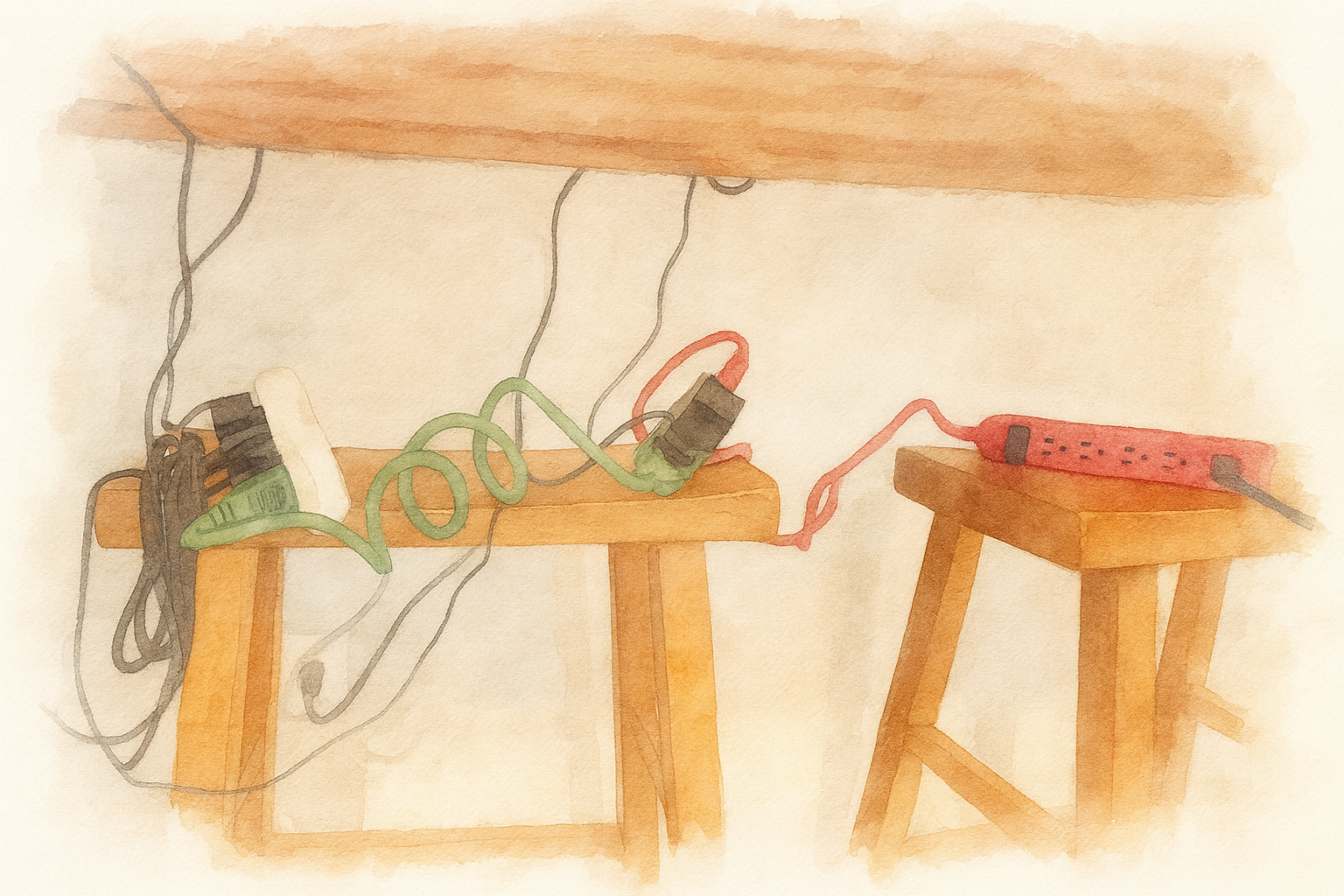Commonly Overlooked Safety Risks in Churches (And How to Spot the Hazards Hiding in Plain Sight)

Hey there,
I’ve walked into hundreds of churches, and here’s what I’ve learned — most safety risks aren’t the big, dramatic ones you see in the movies. They’re the everyday hazards that quietly blend in, until one day they cause an accident, a claim, or a crisis.
As a Certified Safety Professional, I’ve seen how easy it is for leaders to focus on the “big stuff”, emergency plans, security teams, fire drills and miss the smaller issues that can be just as damaging. The good news? Once you know what to look for, these risks are easy to spot and fix.
Here are a few things to assist you in catching hazards hiding in plain sight, so you can protect your people, your property, and your mission.
1. Unsecured Cords and Trip Hazards
It’s amazing how many times I’ve seen an extension cord snake its way across a fellowship hall like it’s auditioning for a jungle movie.
Why It Matters: Falls are one of the most common causes of injury in churches and one of the easiest to prevent. A single trip-and-fall incident can lead to medical bills, liability claims, and shaken trust.
What to Check:
- Cords should be secured with covers or routed along walls.
- Rugs should have non-slip backings.
- Walkways should be clear of clutter before every event.
Pro Tip: Do a “floor scan” before each service or event. If it could trip a distracted person carrying coffee, it needs fixing.
2. Blocked Emergency Exits
Once, I found a Christmas tree blocking a clearly marked exit — beautiful, yes, but not in December and fire season.
Why It Matters: In an emergency, blocked exits can delay evacuation and increase injuries. It’s also a violation of fire code and insurance policies.
What to Check:
- All exit doors should open easily and be free of obstructions.
- Exit signs should be lit and visible from a distance.
- Storage areas shouldn’t spill into exit pathways.
Pro Tip: Assign a volunteer to walk exit routes before each service, fresh eyes catch what regulars overlook.
3. Outdated First Aid and Safety Supplies
I’ve opened church first aid kits that looked like time capsules — expired ointments, missing gloves, and bandages that lost their stick in the 90s.
Why It Matters: In a medical emergency, expired or missing supplies can slow response and increase liability.
What to Check:
- Restock first aid kits quarterly.
- Check AED batteries and pads.
- Confirm fire extinguishers have current inspection tags.
Pro Tip: Create a recurring calendar reminder to inspect all safety gear at once — less hassle, more peace of mind.
4. Child Check-In and Pick-Up Gaps
One church I worked with had an “informal” pick-up system, which basically meant anyone could wave and walk off with a child. Not good.
Why It Matters: Even one gap in child safety can put kids at risk and create devastating consequences for families and your organization.
What to Check:
- Require ID or a matching tag for pick-up.
- Keep accurate attendance for each classroom.
- Train volunteers on your policy and enforce it consistently.
Pro Tip: Role-play scenarios during volunteer training so your team knows exactly how to handle a mismatch.
5. Poor Lighting in Key Areas
Dark stairwells, unlit parking lots, and dim hallways are more than just unwelcoming — they’re risky.
Why It Matters: Poor lighting increases the possibility of falls, creates security blind spots, and makes it harder for guests to navigate safely.
What to Check:
- Replace burned-out bulbs immediately.
- Use brighter, energy-efficient lighting in high-traffic areas.
- Ensure parking lot lights are on a timer or motion sensor.
Pro Tip: Walk your campus at night once a month to spot lighting gaps you can’t see in daylight.
6. Missing or Outdated Policies
Safety policies that live in a dusty binder don’t help anyone.
Why It Matters: Without clear, updated policies, you can’t ensure consistent safety practices and you risk falling out of compliance with legal or insurance requirements.
What to Check:
- Review policies annually for relevance and accuracy.
- Document any changes and share them with your team.
- Keep signed acknowledgements from staff and volunteers.
Pro Tip: Track policy updates and sign-offs in one central location so you can pull them instantly if needed.
7. No Centralized Documentation System
I’ve seen churches with safety records scattered across filing cabinets, personal laptops, and sticky notes on a fridge.
Why It Matters: In a crisis, you don’t have time to hunt for incident reports or training records. Centralized documentation saves time and proves your diligence.
What to Check:
- Store all safety records in one place.
- Use consistent file naming for easy searching.
- Limit access to authorized leaders — but make sure they know how to find what they need.
Pro Tip: Digital systems (like Wooli) make storing, searching, and sharing safety documentation a breeze, no more paper chases.
Bottom Line: The Risks You Don’t See Are the Ones That Sneak Up on You
Keeping people safe doesn’t mean you have to overhaul everything overnight. It’s about catching small hazards before they turn into big problems. Walk your space with fresh eyes, tackle one checklist item at a time, and you’ll build a stronger safety culture week by week.
And if you want a system that reminds you of inspections, tracks your safety progress, and keeps all your documentation in one place, join the Wooli waitlist today. We built it to make safety simple, so you can focus on your mission, not your paperwork.
Stay safe out there,
Lara

About the author
Lara
Safety Professional
Lara is a Certified Safety Professional (CSP) with expertise in risk management and organizational safety. She contributes practical guidance and clear frameworks to help teams operate with confidence.
Want to learn more about Wooli and join our Early access waitlist?
Learn About Wooli